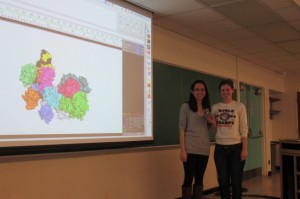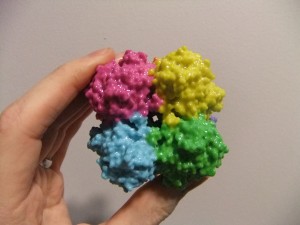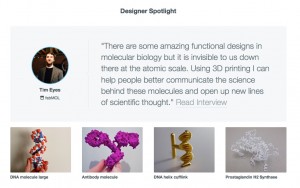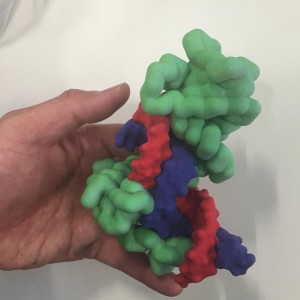
RNAse H purchase here!
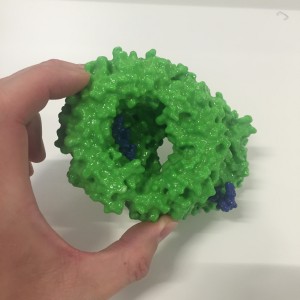
Toll Like Receptor TLR9 purchase here!
FabMOL is a dude and a half! I had noticed that he had posted several 3D prints of various enzymes and other proteins. I contacted him and asked him to make some 3D prints of the proteins my company is interested in. He did, and it didn’t take him very long, and they look beautiful. He even highlighted different parts (DNA versus protein, critical moieties) in different colors for me. He did two of these for me, and they both printed as spectacular specimens that everyone in my company loves. FabMOL is awesome!
Dr W, Boston, USA.
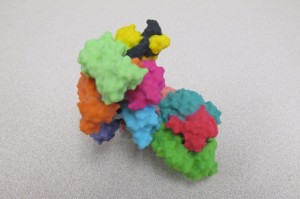
Phage surveillance complex model
The students had a great time today presenting their models to the class. They did a very good job covering the mechanisms of their proteins, too. Some of the students’ comments were:
“I really liked it. Now I can produce those cool structures.”
“I really enjoyed it. It was a new experience to me, yet I loved the group work.”
“Awesome! It was a really good experience and fun!”
Thanks for working closely with us to create the models and a very positive experience for everyone!
Leslie Kuhn, Professor of Biochemistry, Michigan State University, USA.
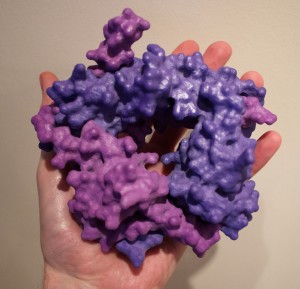
TGF-Beta purchase here!
“As Public Programmes Manager for a large research centre, I am always looking for innovative ways to capture the public’s imagination with what we do. Working with Tim on the design and printing of 3D models of the structures and molecules we work on really brought them to life and were a highlight at our recent event at the Natural History Museum. Getting the chance to see and feel representative models of structures from individual molecules involved in our immune response through the scaled models of the inside of the human gut drew people’s attention and made explaining our research much more straightforward. 3D printed models are an excellent tool and one which we intend to use in the future.”
Ceri Harrop, Public Programmes Manager, Wellcome Trust Centre for Cell-Matrix Research, UK.
“The elucidation of macromolecular three dimensional structures plays a major role across a diversity of scientific disciplines. The ability to translate these structures into tangible 3D objects should not be underestimated, particularly when communicating with groups of non experts. Audiences are far more able to grasp concepts relating to tertiary and quaternary structure when they can both see and handle an object displaying the key characteristics. Advances in printing technology that have brought enhanced resolution and colour to these models continue to further increase their worth.”
Colin Levy, Manchester Institute of Biotechnology, UK.

